How to Use Chalk Paint Wax Finish
This post may contain affiliate links which won't change your price but will share some commission. Read more here.Can’t find answers to your questions on chalk painting? This post has everything you need to know about chalk painting and how to use chalk paint wax finish!
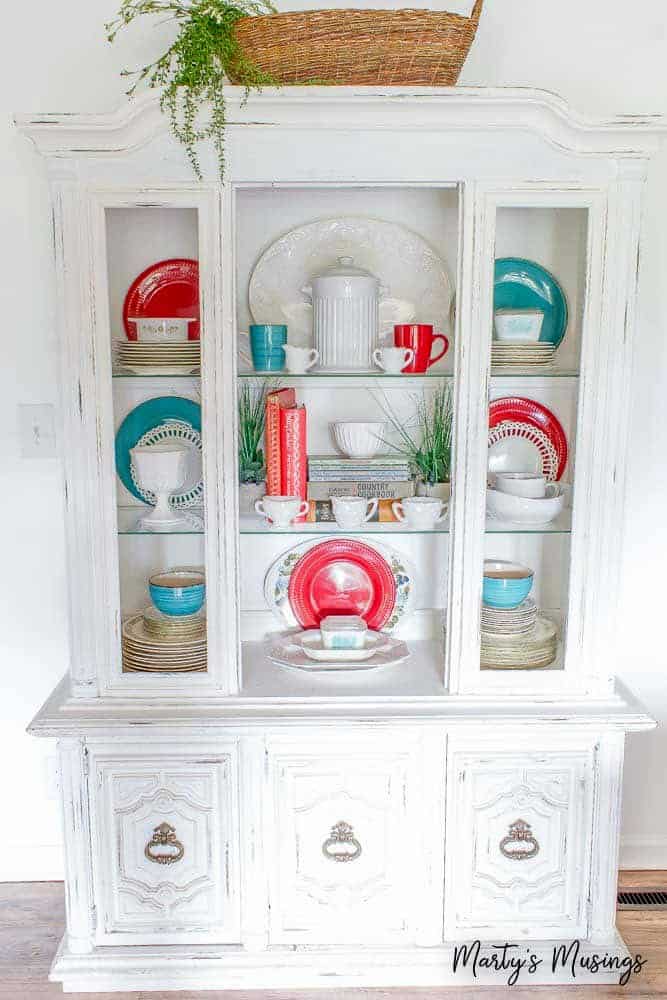
One of my readers’ favorite posts is the one with Chalk Painting Tips for Beginners. I love encouraging others to try this decorative paint that is easy and fun!
You may think chalk painting is only to achieve the rustic farmhouse look. I believe this painting technique can be used in many more applications such as furniture makeovers, updating a coffee table or even kitchen cabinets!
The great thing about chalk paint is how it sticks to almost every surface. Its unique matte finish has a vintage look all on its own even without distressing.
But what about waxing? Is it necessary and if so, what kind and how do I apply it?
Here is a list of all the products I recommend for chalk painting. (You can also visit my Amazon store here!)
Materials:
I’m linking a ton of resources that should be easily accessible. There are many different types of chalk paint available now and as I try different brands I’ll link to the ones I like.
Simple Green Degreaser and Cleaner (for cleaning furniture)
Fusion Mineral Paint – this is my newest favorite and goes on like butter!
DecoArt Americana Chalky Finish Paint (is one I love and is less expensive)
FolkArt Home Décor Chalk Finish Paint
Creme Wax, Clear (seals with a transparent finish)
Creme Wax, Golden Brown (seals with color and dimension)
Creme Wax, Dark Brown (darkest of the wax finishes)
Light Satin Varnish (like polyurethane, perfect for sealing a project)
Ultra Matte Varnish (also like polyurethane but with a flat finish) I’ve never used this product but I would definitely try it.
Minwax Polycrylic Protective Finish (not formulated for chalk paint but a durable alternative for sealing.
Kilz Primer (for covering difficult stains or bleed-through)
Paint Brushes (a basic inexpensive set)
Two in One Chalk Paint and Wax Brush (specifically for chalk painting)
Foam Brushes (for smaller projects)
Sandpaper Sheets (for distressing)
Medium/Coarse Sanding Sponge (for distressing)
Palm Sander (one of my favorite tools for heavy sanding)
Why use chalk paint?
Chalk paint stands out from other paints because it requires no preparation like latex paint and normally no sanding or priming. The paint can be used on almost any surface, indoors or outdoors and has a beautiful sheen when the project is completed.
Plus, the paint is water soluble which means cleanup is a breeze!
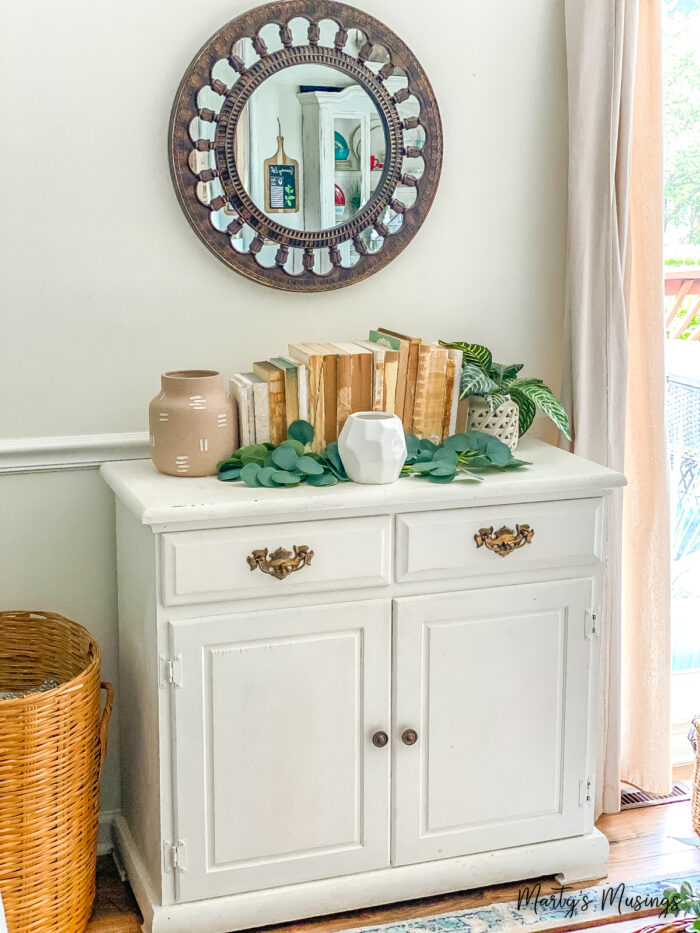
Do I have to prime my furniture before chalk painting?
My answer is usually no unless there is considerable texture difference on the top or sides of the piece. Think dings or missing pieces of wood. The older the piece the more likely you will have to work a bit to achieve a smooth finish.
The other consideration is if your wood is mahogany (which might bleed through a pink shade, called tannin) or knotted pine and cedar (which might expose yellow or orange.) In those cases I would use Kilz Primer for a first coat of paint.
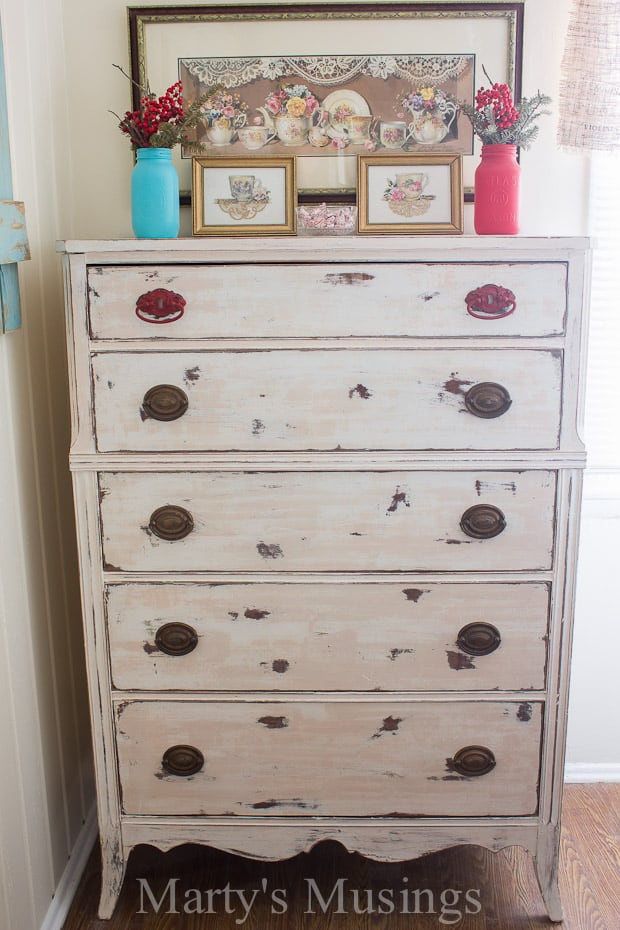
Trash to Treasure Chalk Painted Dresser
I do recommend that you clean the dirt off the surface before you paint it, especially if it’s been used or is a thrift store find. This degreaser and cleaner works really well and is inexpensive.
What is chalk paint wax?
Chalk paint® wax is a product used to preserve the paint on your painted surface. There are newer paints that don’t require a sealer topcoat of wax but when in doubt go ahead and wax it!
This should go without saying, but always read the directions on both the chalk paint and the wax. When I’m making over a piece I have little money invested in, I’ll take more chances and experiment more. But if you’re painting a vintage piece with a durable finish, take the opportunity to research ahead of time.
Other benefits of this furniture wax are no odor, you can work in small sections at a time and doesn’t require too much elbow grease!
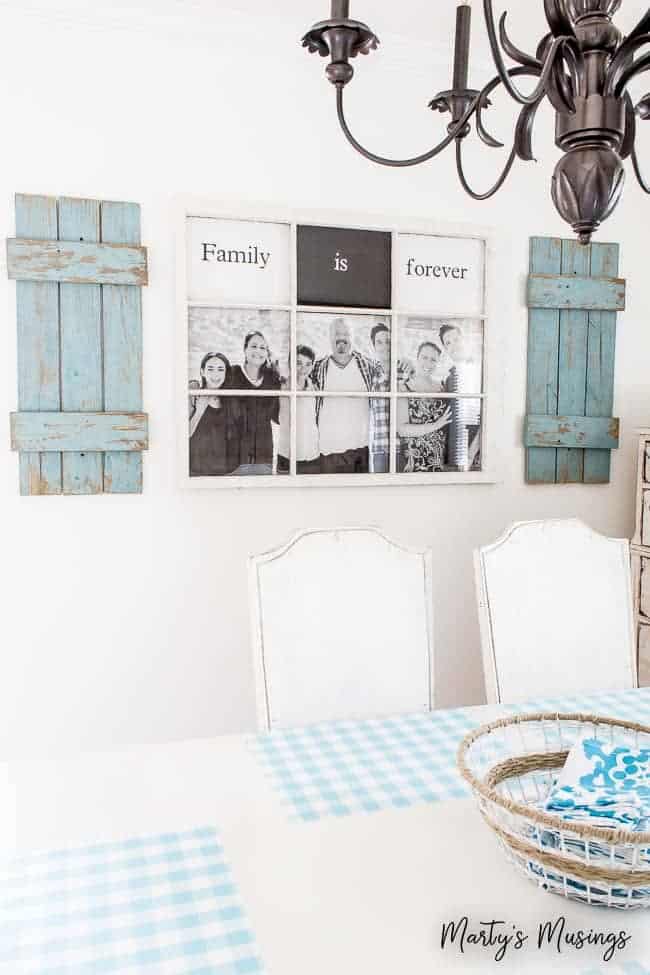
What does finishing wax do to chalk paint?
For this post we’re going to assume you’ve already applied chalk paint to your furniture piece and the information in this post applies specifically to the technique of waxing.
A thin coat of wax is usually necessary to protect your furniture makeover from scratches and dings, especially in high traffic areas. Basically soft wax is the top coat that will preserve your furniture for years to come.
I’ve found that different waxes have different textures. Some are more like a creme and some like a liquid. Just make sure whatever you use gives you full coverage of your piece. Also make sure and read the directions for how long the piece should cure.
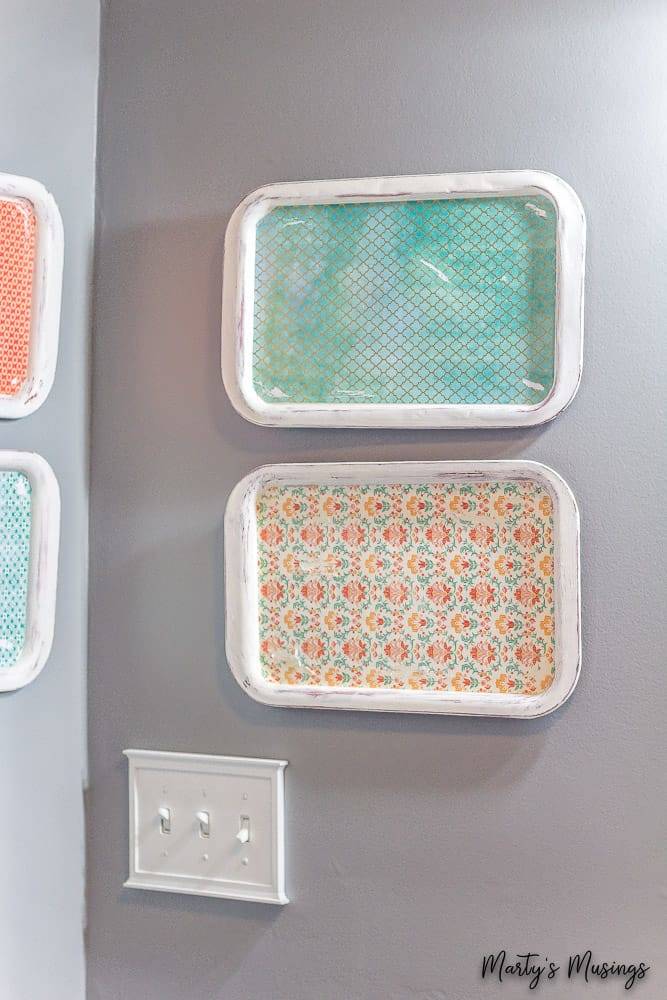
How do I apply wax to my piece?
Since you’ve already chalk painted now you need to think through the process of applying a small amount of wax. I often use a rag or a lint-free cloth. You can use a chalk paint and wax brush if you want but I just like to get my hands a little dirty (plus it’s cheaper!)
Apply wax with a soft cloth and rub in circular motions to make sure the wax gets in all the crevices and corners. Allow drying time as specified in the product instructions. Then buff the finish after the wax is dry with another soft cloth, removing any excess wax.
If you’re distressing your piece, do so before you wax.
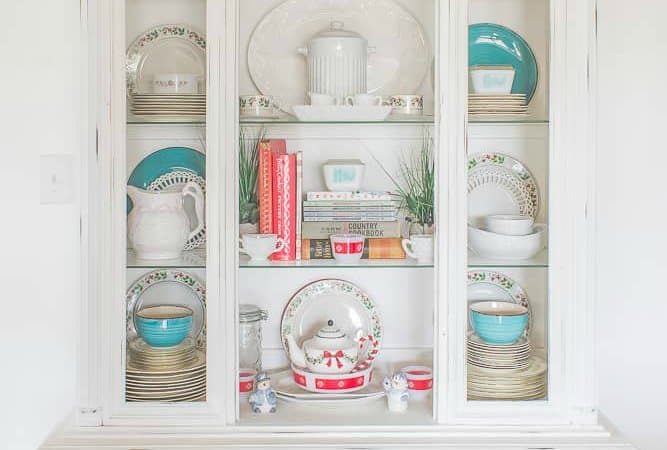
China Hutch Makeover with Annie Sloan Chalk Paint
What about dark wax?
You’ll have to decide whether you want a clear coat of wax or a dark wax. As with chalk paint itself there are new brands on the markets to give you additional choices. A clear wax will seal the piece almost invisibly, depending upon the color of the paint.
The purpose of the wax can be sealing (like the clear) or to add color and seal (like the dark satin). Dark satin is going to adhere wherever you apply it even if you wipe it back off.
My suggestion would be to paint a section on the underneath of the piece and test it out there. That way if you don’t like it you haven’t ruined your entire piece.
Dark will have a more significant impact on both color and appearance. The dark wax really creates additional dimension, as it will collect in crevices, corners, and any decorative accents.
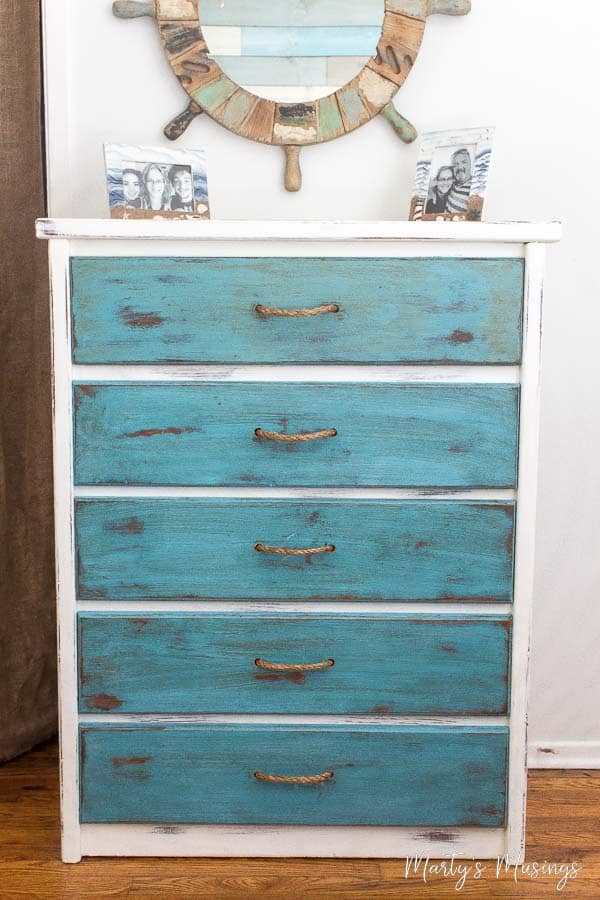
How to Paint Furniture with Chalk Paint
What about using vaseline?
There are two ways you can use this inexpensive product. To achieve an antiqued look, apply vaseline to corners, detail areas, and other areas that would naturally become distressed BEFORE you paint. This will keep the chalk paint from sticking to the surface.
Be careful when adding it to the furniture and know what kind of look you want ahead of time.
A second way some people use vaseline is with waxing as well, which you can apply to places where you want to remove the wax during the waxing process. This is especially true if you’re applying a dark wax as below and only want a thin layer in small areas of your piece.
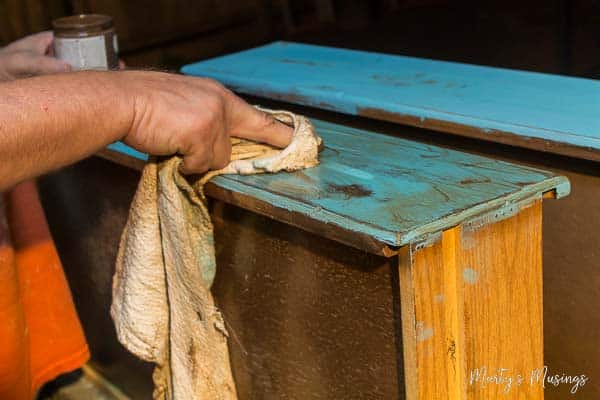
Apply vaseline to specific areas and then apply your dark wax. Use a second cloth to remove the wax from any areas that seem too dark.
Do you have to use chalk paint wax?
If the piece you’re painting is simply going to be hanging on a wall then I would say it’s ok to skip this step. The plank wall below was not waxed and it did well over the six years in our home before my husband and I divorced.
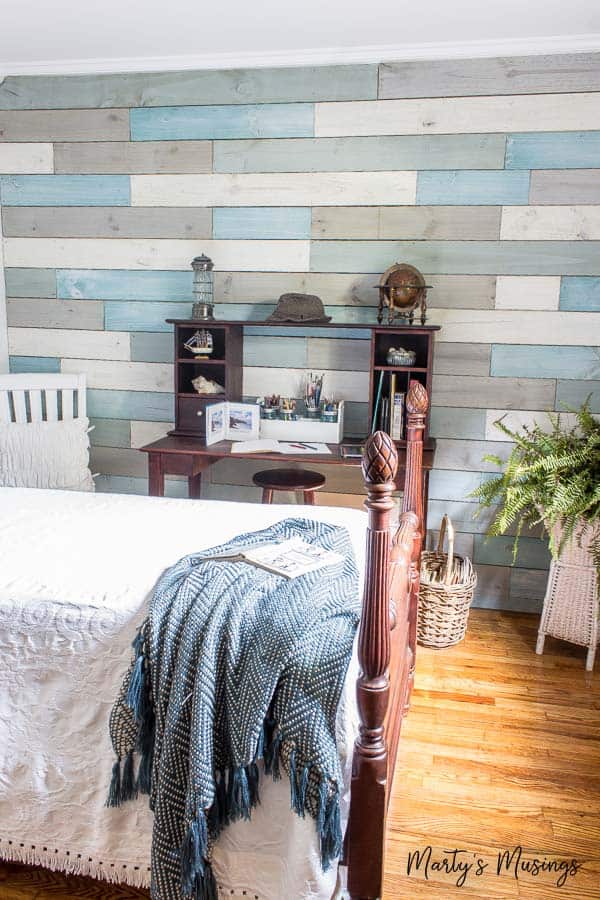
How to DIY Plank Walls with Chalk Paint
What about varnish?
Light Satin Varnish is used with a project that is going to see a lot of use, such as a table. You would go through the regular process of applying chalk paint, distressing (if desired) and wiping down with a clean cloth.
Then you would go ahead and seal it with the varnish at this point. You don’t need to wax it since the varnish IS the sealant.
On a previous bathroom remodel we used a dresser for a vanity. I went through the entire process of chalk painting, distressing, etc. I used a light satin varnish on the top but I didn’t feel like it was enough to repel water.
Instead I applied Minwax Polycrylic Protective Finish to give the needed coverage. If desired apply a second coat for extra durability.
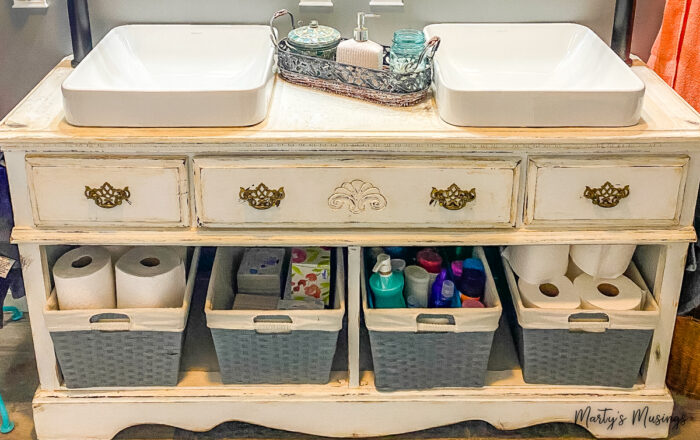
Small Farmhouse Bathroom Remodel
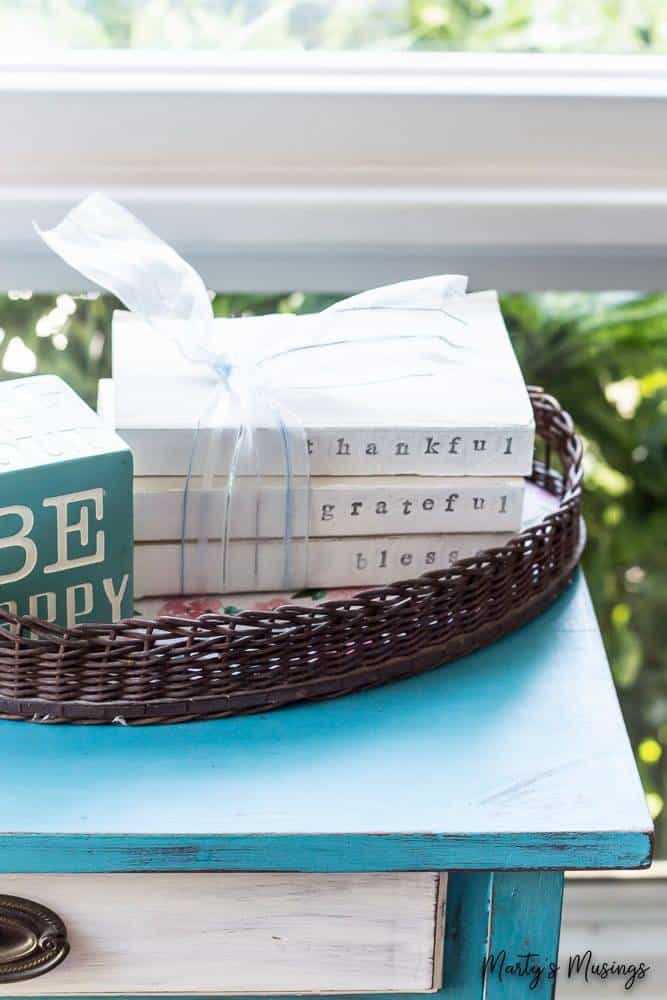
DIY Stamped Books using Chalk Paint
Can I use chalk spray paint for the project?
I’ve used spray paint for smaller objects and home decor. I wouldn’t recommend spray painting because it would be difficult to apply an even coat over the entire area. Plus it would take a few cans to do it depending on the size of your furniture and you would need to be in a ventilated area.
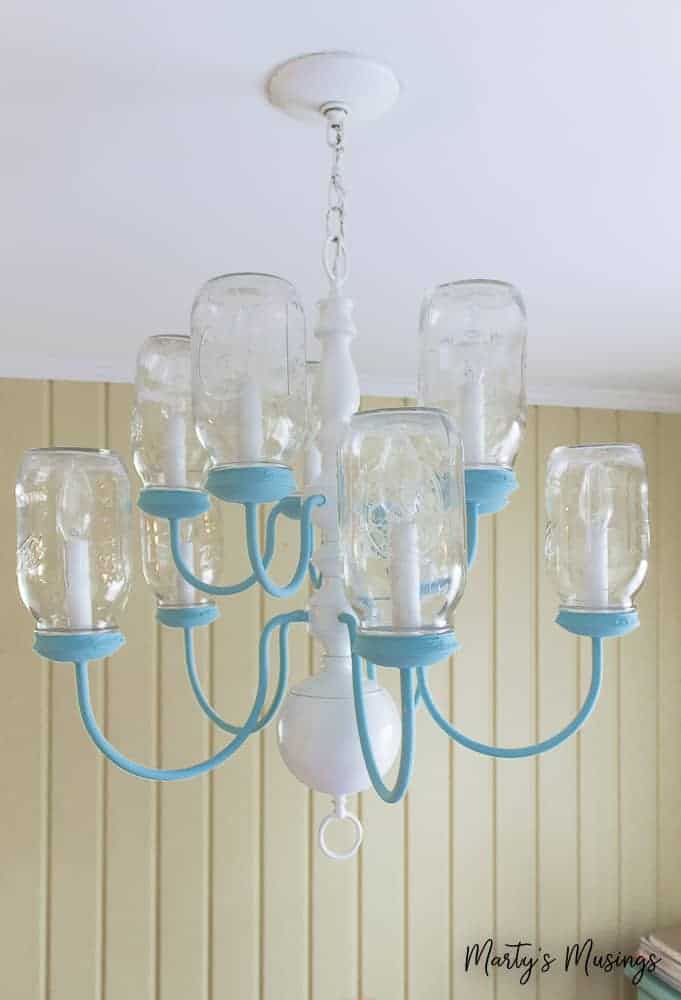
Some final thoughts: if you’ve never tried painting an entire piece of furniture or any type of home decor accessories (think candle holders, signs, etc.) I believe chalk paint is the easiest way to get started. Chalk paint gives a beautiful mellow finish and your options for using chalk paint® change dramatically by using wax to distress or change the top color.
Don’t be afraid to try it and be sure to leave your questions below!

FAQs about Chalk Paint Wax
More Chalk Paint Projects
Tips and projects for beginners and pros alike that prove that anyone can learn to paint furniture and home decor accessories with chalk paint!
How to Use Chalk Paint Wax Finish
Instructions
- Materials:
- Why use chalk paint?
- Do I have to prime my furniture before chalk painting?
- What is chalk paint wax?
- What does finishing wax do to chalk paint?
- How do I apply wax to my piece?
- What about dark wax?
- What about using vaseline?
- Do you have to use chalk paint wax?
- What about varnish?
- Can I use chalk spray paint for the project?
Video
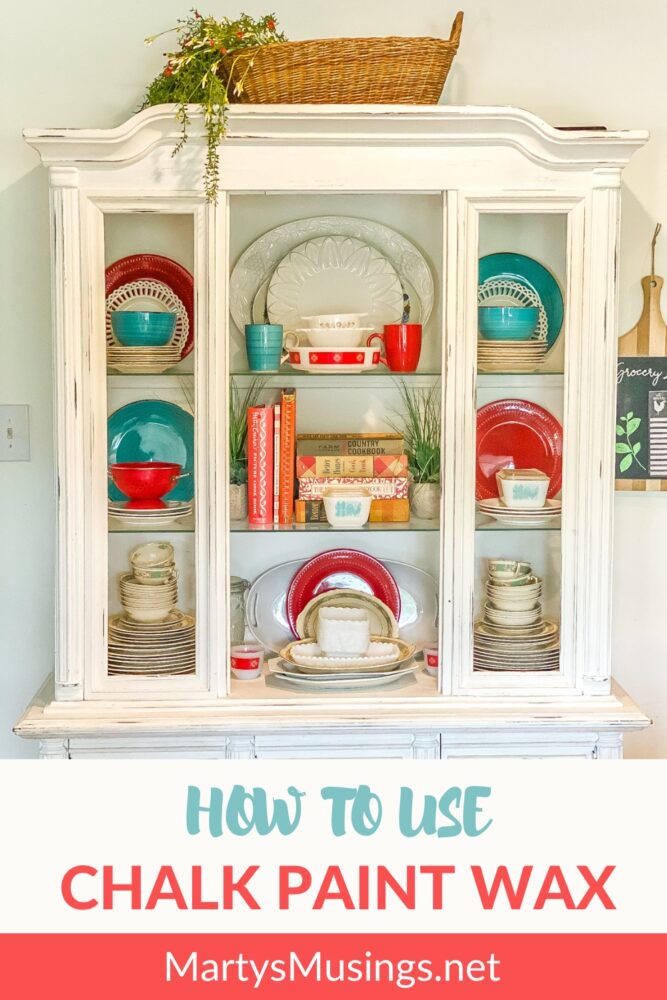
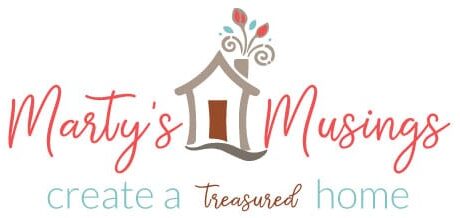

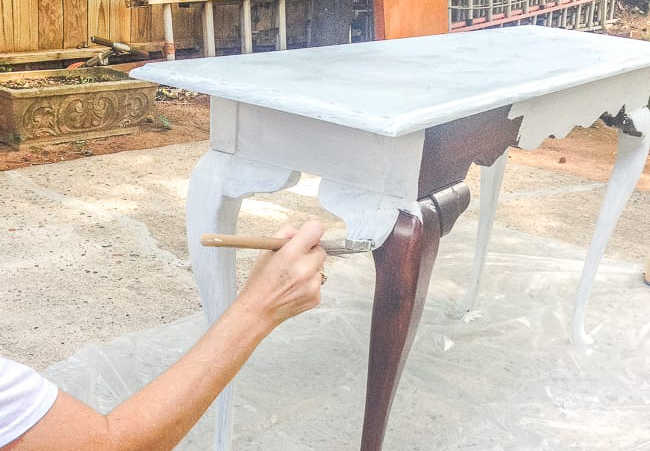
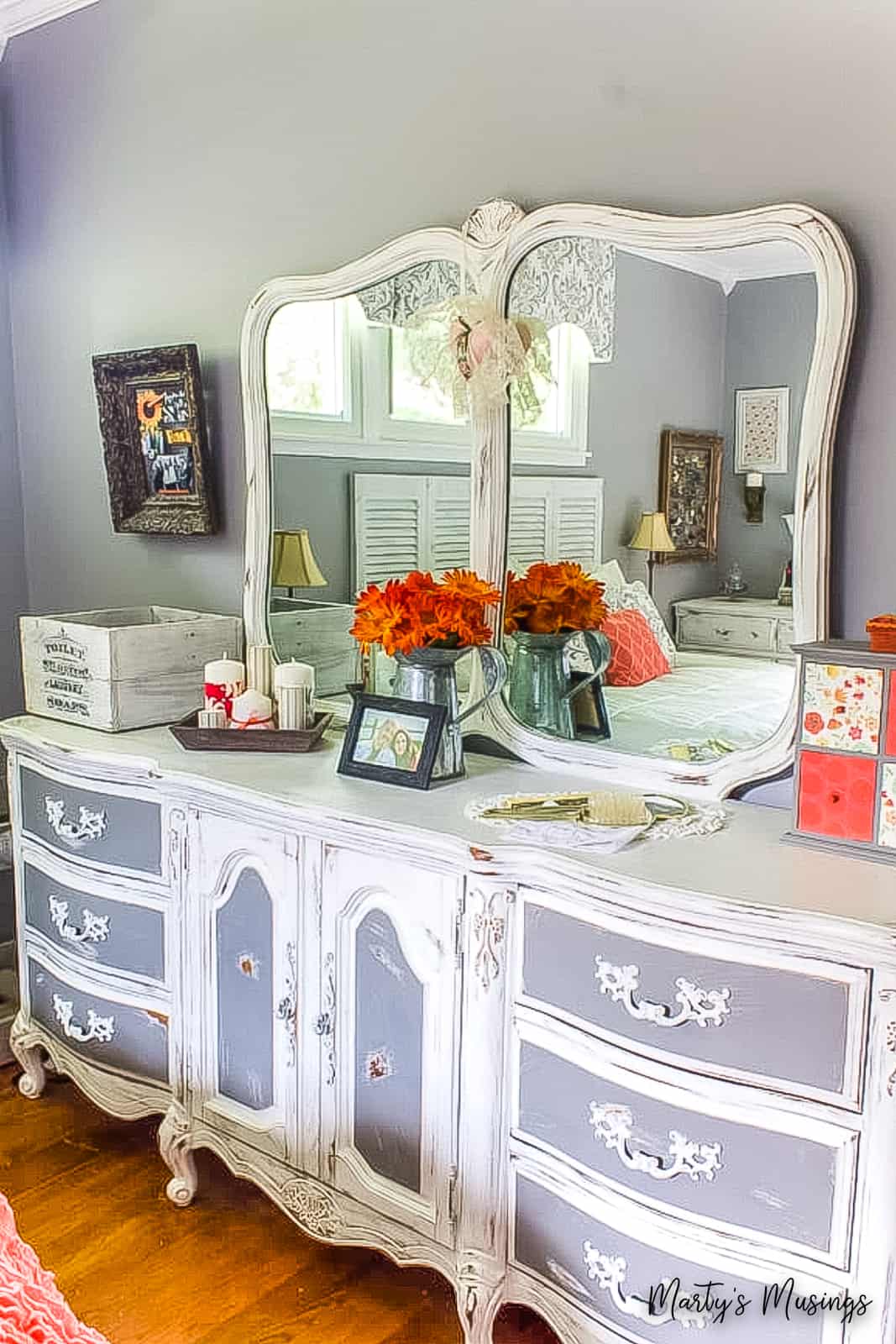
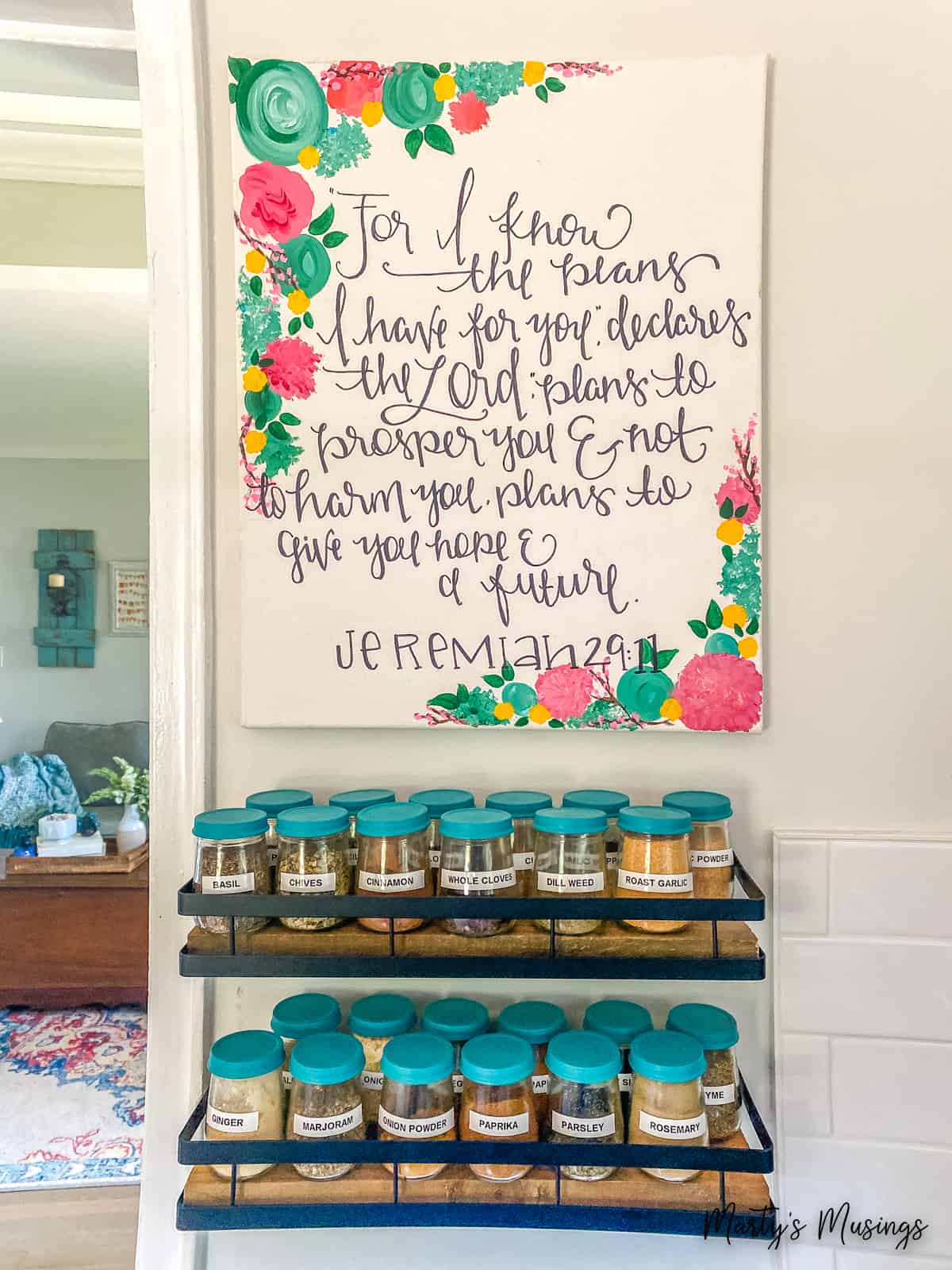

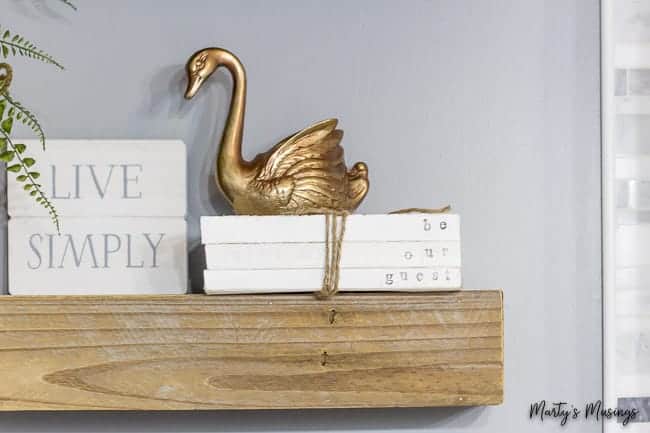
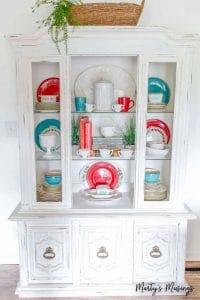
Great tips! I am going to try to chalk paint a piece I have soon!
Hi. I didn’t see instructions for “chalk paint wax.” Was the info removed?
I chalk painted 6 chairs and a table, and put on the final matte clear wax (I used rust-oleum) before I distressed, as I was so excited I forgot this important step. Ugh. Can I distress, clean, and then just put on another layer of the wax?
Hi, Susi. I think it’s perfectly okay to go ahead and distress and then wax on top. The only thought is it might be a little more difficult but it’s certainly doable. You can repaint over chalk if you don’t like the color or whatever. Hope this helps!
I have not been able to find how the dark areas are achieved over the white. Is this from the wax or is it done with another shade of chalk paint…kinda like the old antiquing process. I have done a couple of pieces like that, but it was not with a white paint…a taupe color. Now, I am planning to use a white. Can you help clarify? Thanks!
Hi, Betty. If you use a white chalk paint base you can apply a darker wax, such as medium brown or brown, on the piece. Then you use a soft cloth to wipe away some of the dark wax until you get the effect you’re looking for. Hope this helps!
Great tips Marty!
With so much time on my hands, I will need to try this!
Robin
Hi, Robin. I hope this post will help and you get a lot done!
Thanks for sharing all of your tips and tricks with chalk paint wax. Definitely will come in handy with my next furniture makeover!
Hi, Meegan. I love trying new techniques with chalk painting and it’s so forgiving! Thanks for sharing!
Thank you so much Marty, some really great tips. Have pinned this post for next time I paint. Always come up with loads of questions because I am still new to furniture painting.
So glad, Anita! Chalk painting is so forgiving. It’s my favorite!
Marty, I want to do this with some pieces. Thanks for the tutorials
You’re very welcome, Deana! Hope this was helpful!
Thanks so much Marty, your tips are super helpful. I’ve saved your post because I know I’m going be referring to it often
Thanks, Michelle. I hope it was helpful!
Such a complete guide! Thank you!
Thanks so much, Lori. Chalk painting is the best!
Great tips,, thanks! Have you try this one day 🙂
Thanks, Sara. I love chalk painting!